US President Joseph Biden is about to begin his trip to the Middle East with stops at Saudi Arabia and Israel. However, right before the President embarked on his journey, the US announced that the region’s common enemy Iran was sending Unmanned Combat Aerial Vehicles (UCAVs) to Russia.
On July 11, the White House stated that it believes Russia was looking to Iran to get “hundreds” of unmanned aerial vehicles, including drones with weapons, for its ongoing conflict in Ukraine.
This announcement was followed by Russia’s announcement that President Putin will meet Iranian leader Raisi and Turkish leader Erdogan next week.
In response, Kremlin spokesman Dmitry Peskov said that Russian President Vladimir Putin will not discuss the procurement of drones during his trip to Iran on July 19.
“No,” Peskov told reporters when asked if this issue will be discussed during Putin’s visit to Tehran.
Even though it is currently unknown whether Iran has already given Russia any unmanned drones, according to US National Security Advisor Jake Sullivan, Iran is reportedly planning to train Russian forces to operate them as early as this month.
It is worth emphasizing that Saudi Arabia and Israel have condemned the Russian war against Ukraine but have fallen short of imposing sanctions due to their political and economic interests.
However, with Iran into the equation, the US President’s visit to the region becomes all the more significant.
Iranian military assistance to Moscow was proof that Russia’s heavy bombardments in Ukraine, which had helped it solidify victories in the country’s east recently, were coming at a cost to the sustainment of its armaments, according to Jake Sullivan.
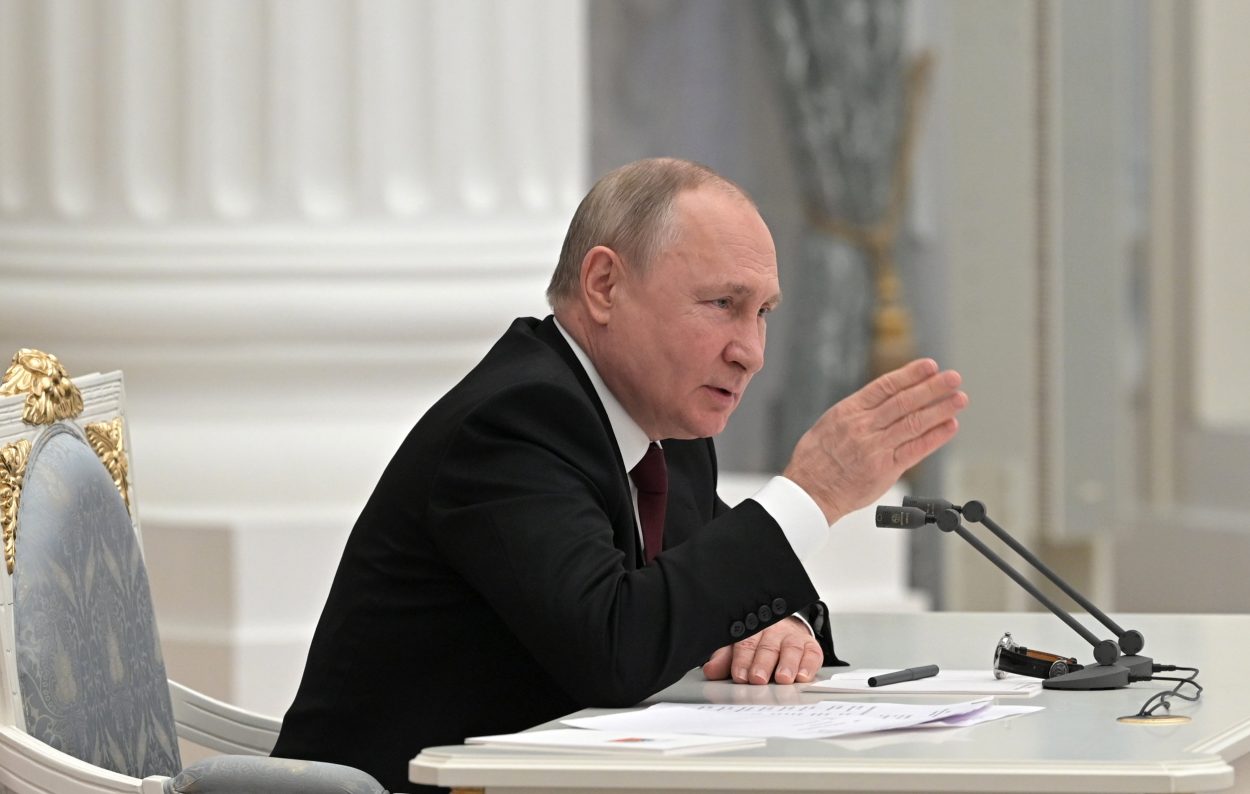
In addition, Sullivan also pointed out that Iran had given similar drones to the Houthi rebels in Yemen, who had previously attacked Saudi Arabia before a ceasefire was negotiated earlier this year. Iran-backed Houthi militias have carried out several lethal drone strikes on the civilian infrastructure of the UAE-Saudi Arabia coalition that it is fighting in Yemen.
Earlier, Israel had accused Iran of supplying combat drones to Venezuela and asserted that the two anti-US allies could use these drones to unleash ‘terrorism.’
If Washington’s claims are anything to go by, Iran’s assistance to Russia potentially comes from the tectonic shift in the geopolitical order where Tehran finds itself isolated. The nuclear deal hanging in the balance exacerbated the alienation between Iran and the US-Israel nexus.
⚡️White House: Iran might provide hundreds of drones to Russia.
The White House said on July 11 it has information that Russia is turning to Iran to provide the country with hundreds of unmanned aerial vehicles.
— The Kyiv Independent (@KyivIndependent) July 11, 2022
Further, the bonhomie between Russia and Iran runs deep as they have been fighting together in Syria alongside Bashar al Assad’s regime. Some speculative reports had earlier claimed that Russia was acquiring weapons from Iranian weapons smuggling networks amid the ongoing war against Ukraine.
Rumors have also been floating around that Russia can potentially provide Iran with 100,000 hectares of farmland on its territory. The proposal was made last month during a Russian delegation’s visit to Iran, IRNA reported.
Russia can provide Iran with 100,000 hectares of farmland on its territory.
The proposal was made last month during a Russian delegation's visit to Iran, IRNA reported.
— Spriteer (@spriteer_774400) July 11, 2022
After former US President Donald Trump abandoned the nuclear deal with Iran and imposed crippling sanctions against it, Iran has embraced two of America’s biggest rivals- Russia and China. The relationship between Tehran and western rivals has led observers to believe that alternate world order is underway.
Iran’s Drone Power
The Iran-Iraq war in the middle of the 1980s is where Iran’s interest in drones and unmanned vehicles began. Iran has been a leader in the unmanned aerial vehicle (UAV) industry for many years, even though its nuclear program and capabilities have hogged all limelight.
Iranian drone experience has grown significantly in recent years. Iran is now taking on a bigger role as a rising drone superpower in the region, using its drone technology in Gaza, Yemen, Lebanon, Syria, and Iraq, according to Seth J Frantzman, writing for Atlantic Council.
Most of the drones used against Saudi Arabia or US forces in flashpoints like Yemen and Syria are kamikaze drones. These drones are equipped with explosives and are flown with pre-programmed coordinates to hit a target.
Iran has UAVs ranging from small, light short-range systems to medium to heavy unmanned aerial vehicles (UAVs) for intelligence, surveillance, and reconnaissance (ISR).
It is believed that some of the present drone fleet in Iran was made in the United States. Some parts might have been bought underhandedly or on the black market. Tehran shot a couple of American drones out of the sky. However, due to economic isolation, a large chunk has been developed based on domestic technology.
Iran fields more armed drones than many nations that spend twice as much on defense despite a military budget typically ranging from $15 to $20 billion annually and crippling sanctions imposed on it.
While the country has many drones in its arsenal, some top-of-the-line combat drones include the Mohajer series, with the Mohajer-6 being the latest drone variant.
Mohajer-6 can fly up to 18,000 feet in the air, which is higher than many short-range air defense systems and has a maximum range of 124 miles, a 12-hour endurance, and a maximum altitude capability.
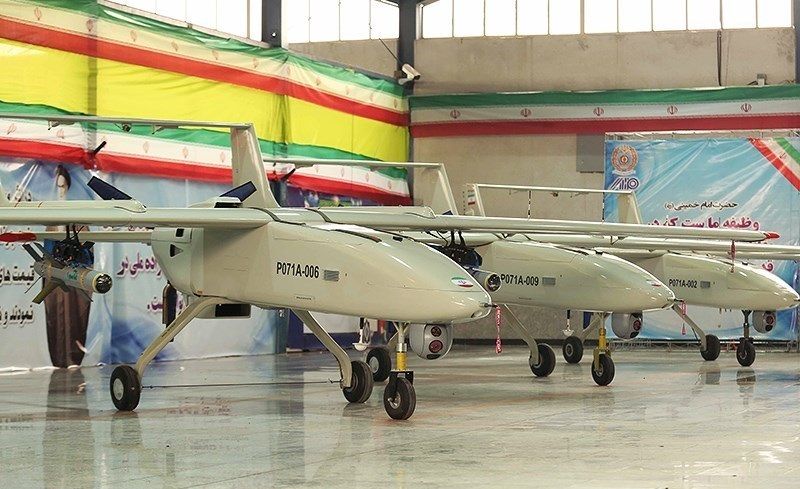
A second lethal combat UAV in the Iranian arsenal is the Shahed 129, a medium-altitude long-endurance (MALE) drone comparable to the Israeli Hermes 450 UCAV. It uses the same Austrian-made Rotax 914 piston engine to power its pusher propeller as used by American MQ-1 Predator drones.
Shahed has participated in a great deal of combat, having been stationed at American special forces facilities in al-Tanf and other Syrian air bases since 2014 to monitor and eventually assault anti-Assad rebels.
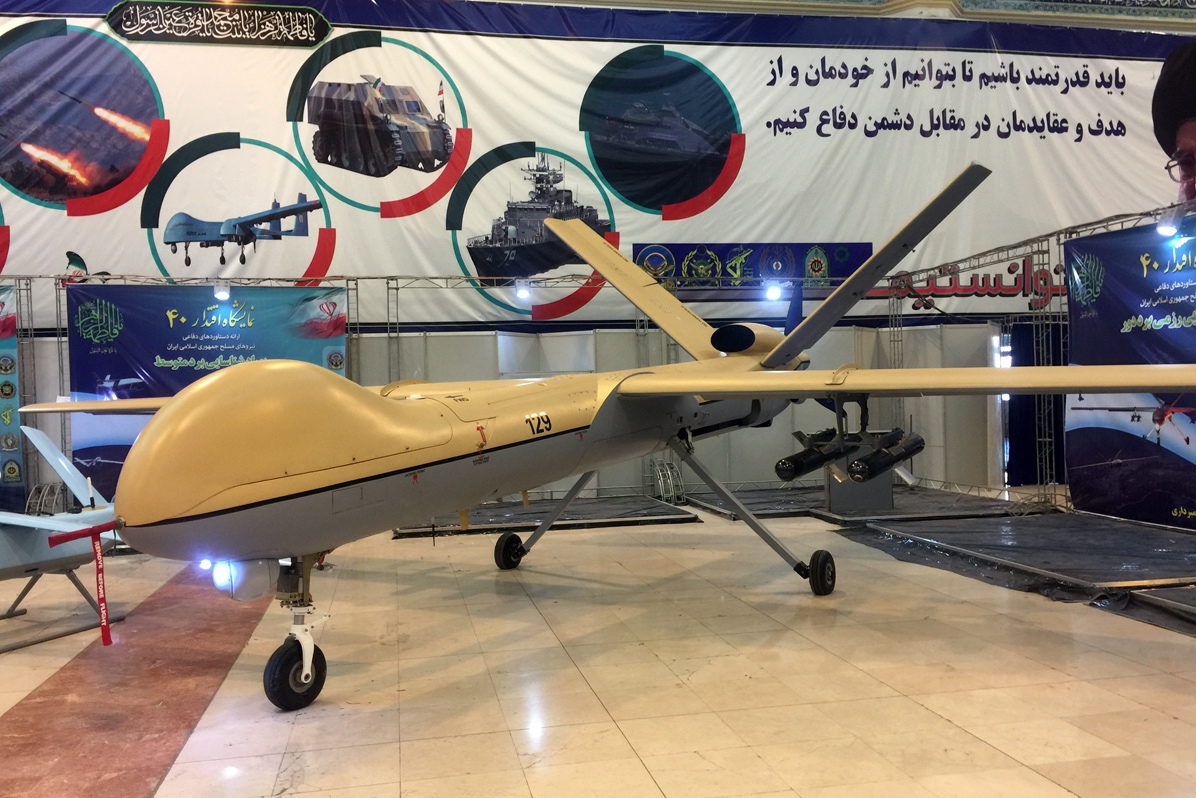
After purchasing MQM-107A Streaker practice target drones from the United States in the 1970s, Iran started reverse-engineering them in 2002. The resultant Karrar drone resembles a cruise missile with bigger wings and has a top speed of 560 miles per hour, thanks to technology from the South African Denel Skua target drone.
The Karrar, which can be employed as a kamikaze weapon and is still primarily used as a target drone, has been modified to carry a 500-pound Mark 82 unguided bomb, two 250-pound Mark 81 bombs, or two Kowsar or Nasr-1 anti-ship missiles.

A Karrar interceptor variant with short-range air-to-air missiles, such as an Iranian version of the American Sidewinder missile known as the Azarakhsh, has also been tested by Iran to destroy an airborne target.
A US RQ-170 stealth drone that reportedly crashed in Iran in December 2011 due to Iranian cyber warfare was mainly found undamaged. Iranian engineers attempted to reverse-engineer the RQ-170, creating a mockup in 2014 called the Shahed 171 Simorgh that was misrepresented as a flying machine.
The piston-engine Saegheh-1 and jet-powered Saegheh-2 were then flying wing stealth drones.
The Fotros long-range UCAV, allegedly Iran’s largest drone, was notably showcased ahead of nuclear weapons control negotiations in 2013. It is said to have a 1,200-mile range, a 30-hour endurance range, a top altitude of 25,000 feet, and a payload capacity of six Qaem-1 precision glide bombs.
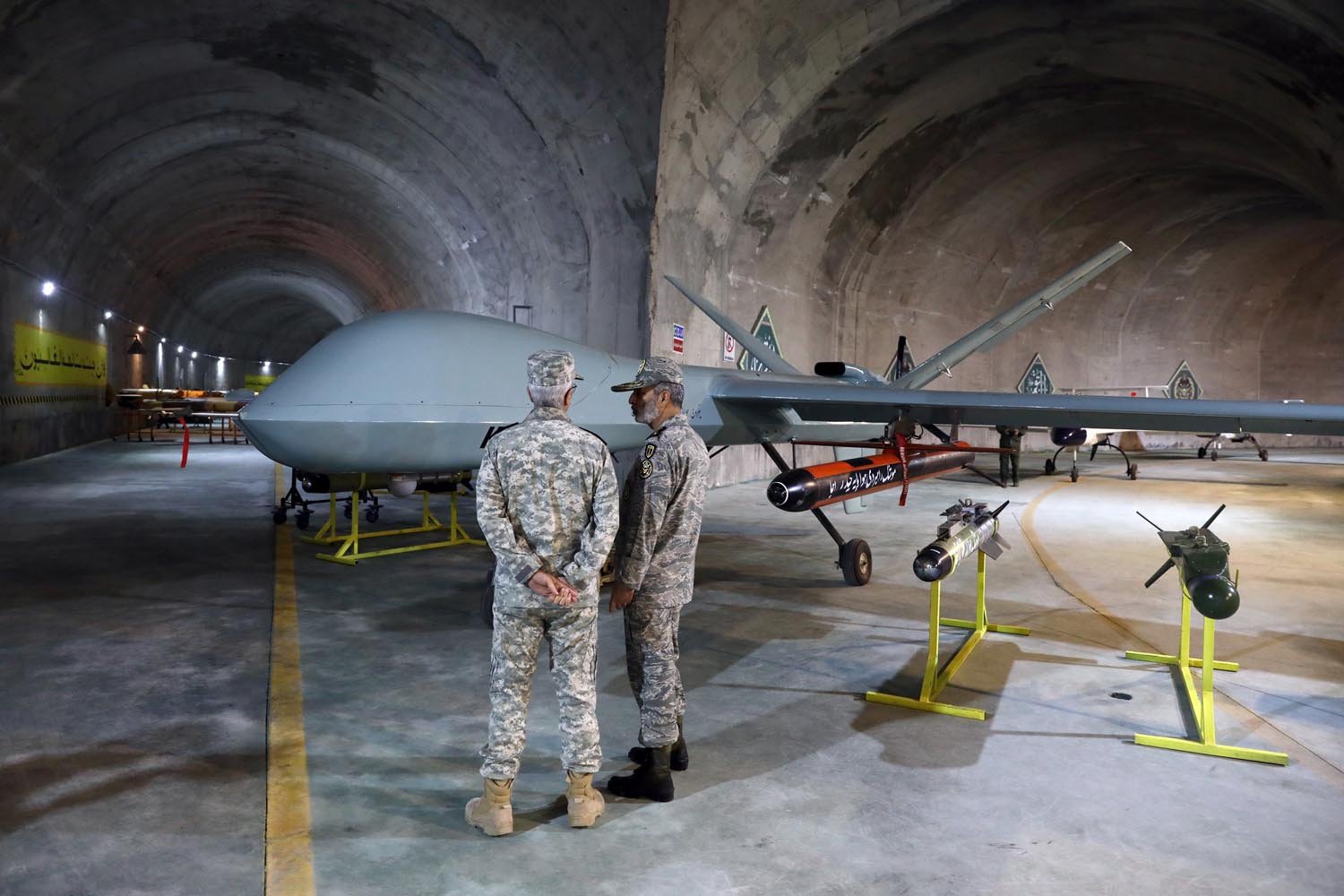
The Iranian Air Force showcased a new, longer-range MALE drone in February 2021 that, right down to the triple tail fins, is remarkably similar to the American MQ-9 Reaper UCAV. According to reports, the Kaman-22 has a range of 1,860 miles, can fly for more than 24 hours, and can carry up to six weapons on underwing hardpoints weighing 661 pounds.
However, it was not revealed by the United States which of these advanced drones were being sent to Russia. In the days leading up to President Joe Biden’s visit to Israel and Saudi Arabia, where Iran’s nuclear program and drone activities will be a topic of conversation, Sullivan’s revelation will have a significant impact.
US Attempt At Cornering Iran
On June 20, Israel’s defense minister Benny Gantz stated that the United States is leading a regional air defense coalition against Iran. The alliance has already prevented certain Iranian strike attempts, as previously reported by the EurAsian Times.
Iran is seen as Israel’s primary foe and is believed to be supporting anti-Israel proxies around the region and advancing a purported nuclear program to Tel Aviv’s detriment. To combat that, Israel has forged alliances with vulnerable Gulf-Arab nations such has also been holding back-channel talks with other countries in the region.
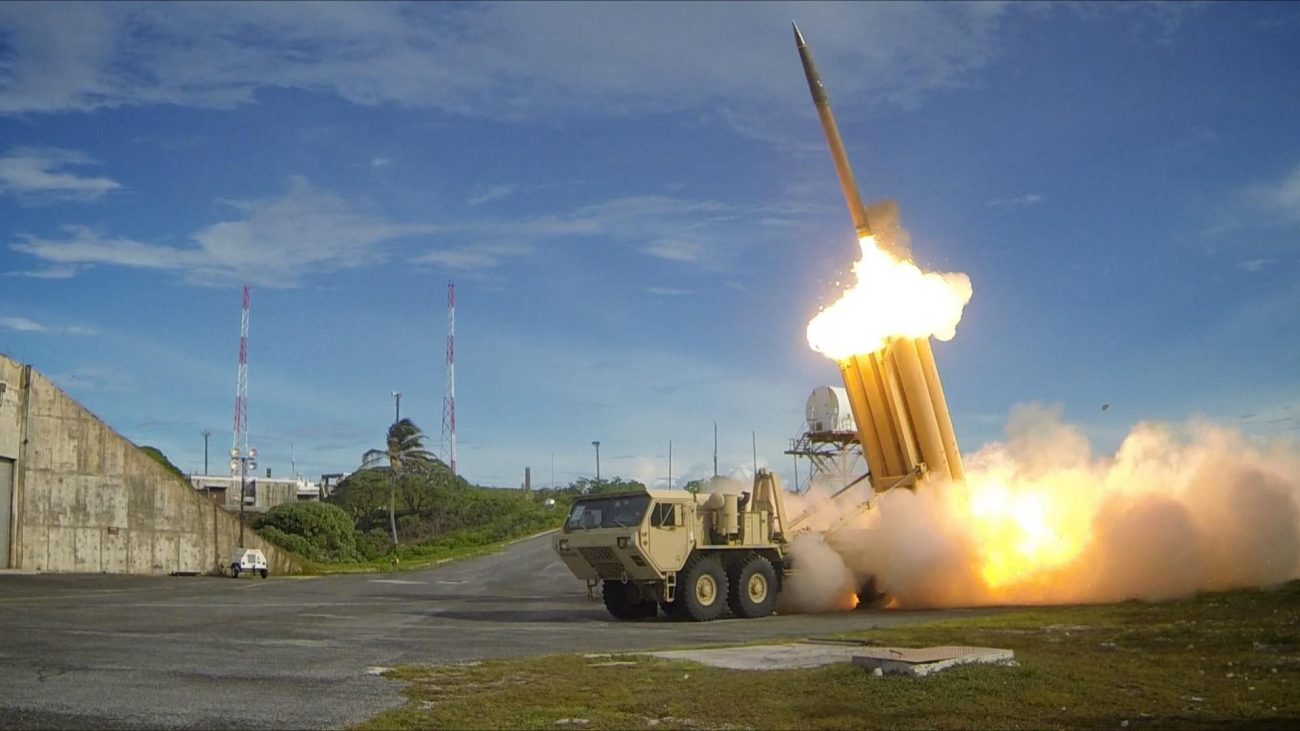
With Gantz’s announcement regarding the regional air defense alliance, Israel, for the first time, acknowledged a regional military alliance with Arab allies as a component of its expanding regional ties.
It is the “first part” of a shared vision, he said, adding “in the face of Iran’s attempts to attack the region’s countries using rockets, cruise missiles, and UAVs” (unmanned aerial vehicles, or drones).
With the US uniting the otherwise hostile region against Iran, the latter could be expected to be drawn closer into the Russian fold. The Tehran drone support to Moscow could thus, be the first among the many facets of a deepening partnership between the two states.
In contrast, as the US embarks on its journey to unite the Gulf-Arab world with Israel to deter Persia in the region, Iran’s collaboration and support to Russia could come in handy.
- Contact the author at sakshi.tiwari9555@gmail.com
- Follow EurAsian Times on Google News




